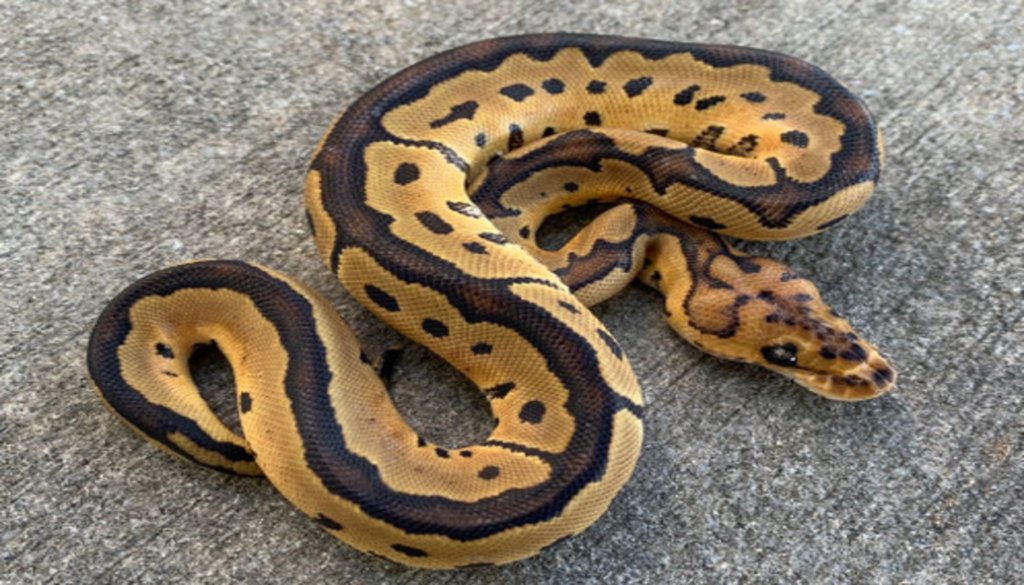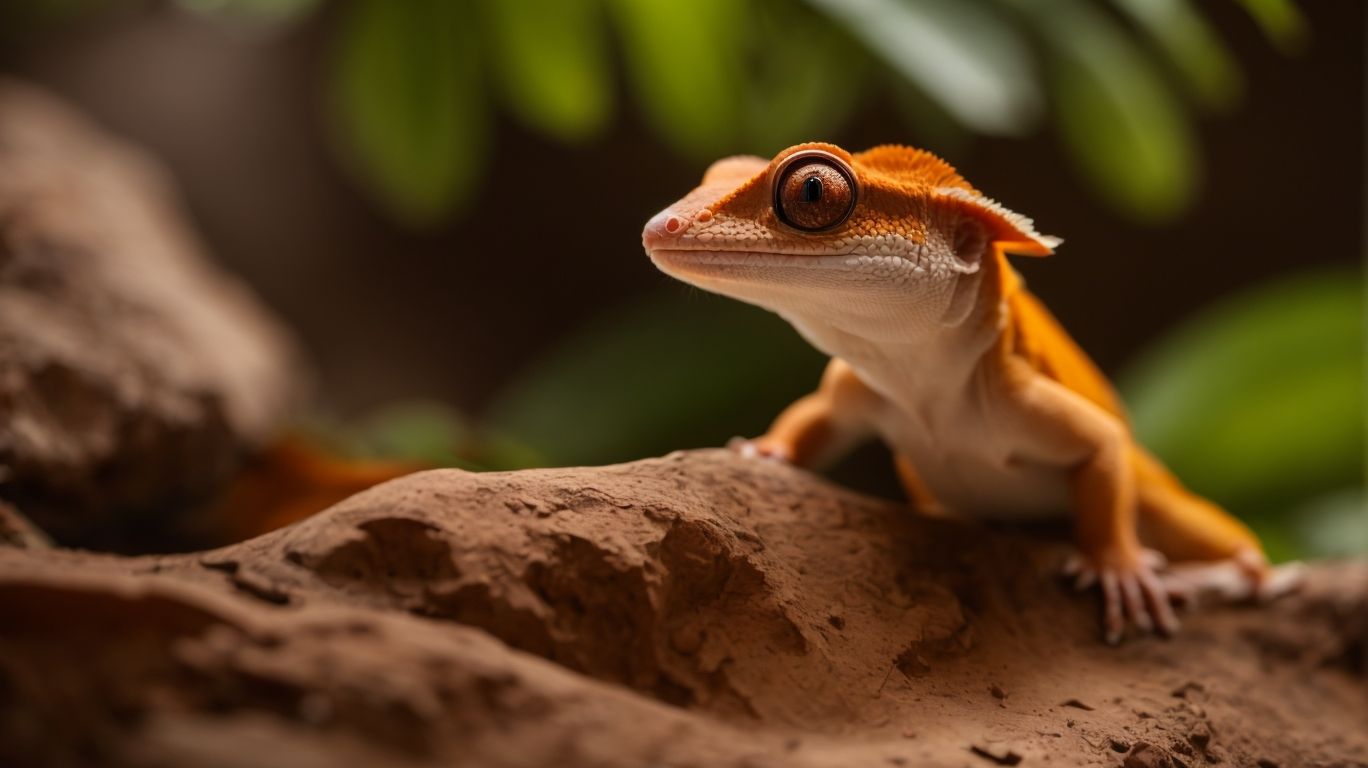
Discovering the fascinating personality of a Clown Ball Python
Table of Contents
Origin of the Clown Ball Python
The clown ball python, also known as the clown royal python, is a unique and captivating snake that has captured the hearts of many reptile enthusiasts. The origin of the clown ball python can be traced back to the central and western regions of Africa. This species is native to countries such as Benin, Togo, Nigeria, and Ghana. The clown ball python was first discovered in the 1990s and quickly gained popularity among snake enthusiasts.
In the wild, clown ball pythons inhabit a variety of habitats, including grasslands, savannas, and forest edges. They are predominantly ground-dwelling snakes, although they can also climb trees and bushes if needed. The natural range of the clown ball python is relatively small compared to other snake species, but they have adapted well to their environment.
In the context of reptiles, a “morph” refers to a distinct genetic variation that results in unique physical characteristics, such as color, pattern, or scale arrangement. Morphs are often the result of specific genetic mutations and are highly sought after by collectors and breeders.
The captivating appearance of the clown ball python is the result of selective breeding. Breeders have selectively bred for certain patterns and colors, resulting in the vibrant and unique patterns seen in the clown ball python today. These breeding efforts have created a wide variety of color morphs, including ones with strikingly bright and contrasting colors.
Physical Characteristics of Clown Ball Pythons
The physical characteristics of clown ball pythons are what make them truly unique and captivating. These snakes have a distinctive appearance that sets them apart from other snake species. One of the most striking features of the clown ball python is its vibrant coloration. They have a pattern that consists of bold and contrasting colors, including bright yellows, oranges, blacks, and whites. These colors are arranged in a swirling or “clown-like” pattern, hence the name clown ball python.
In addition to their captivating colors, clown ball pythons also have a distinctive head pattern. They often exhibit a spot under the eye resembling a harlequin’s tear or a “teardrop” shape. This unique feature adds another layer of intrigue to their already captivating appearance. Moreover, clown ball pythons have a relatively small size compared to other python species. Adult clown ball pythons typically reach a length of 3 to 5 feet, making them easier to handle and care for. They have a robust and muscular body, with a thick neck and a distinct head shape.
Clown Ball Python Temperament
The clown ball python may have a striking and unique appearance, but it’s not just their looks that make them popular among snake lovers. These snakes are known for their docile and gentle temperament, making them great pets for both experienced reptile enthusiasts and beginners alike.
Clown ball pythons are typically calm and easygoing. They are known for being relatively low-maintenance and less prone to aggression compared to other snake species. This makes them an ideal choice for those who are looking for a pet snake that is easy to handle and interact with.
One of the reasons for their docile nature is their natural instinct to curl up into a ball when threatened, hence the name “ball python.” This behavior is a defense mechanism that helps them protect themselves. It also makes them more predictable and less likely to bite or show aggressive behavior.
Another aspect of their temperament that makes them great pets is their adaptability. Clown ball pythons are generally more tolerant of changes in their environment, such as temperature and humidity fluctuations. This makes it easier to create and maintain the ideal habitat for them.
Overall, the clown ball python’s calm and gentle temperament makes them an excellent choice for snake lovers of all levels of experience. Their friendly nature and ease of handling make them a joy to have as pets. Whether you’re a beginner or an experienced snake owner, the clown ball python’s temperament is sure to win you over.
Diet of a Clown Ball Python
The diet of a clown ball python is an important aspect of their overall care and well-being. These snakes are carnivores, meaning they eat a diet consisting solely of meat. In the wild, their diet mainly consists of small mammals such as rats and mice. As pets, it’s essential to provide them with a similar diet to ensure they receive the necessary nutrients.
When it comes to feeding a clown ball python, the most common and convenient option is to offer them pre-killed or frozen-thawed prey. This eliminates the risk of injury to the snake during feeding and ensures that the prey is safe and disease-free. The size of the prey should be appropriate for the size of the snake, typically around 10-15% of the snake’s body weight. Feeding should be done once every 1-2 weeks for adult snakes and more frequently for juveniles.
It’s crucial to remember that feeding live prey to a clown ball python is not recommended. Live prey can potentially harm the snake, as they may fight back and injure the snake during feeding. Additionally, live prey can carry diseases and parasites that can be transmitted to the snake. Feeding frozen-thawed prey is not only safer for the snake but also more convenient for the owner. When presenting the prey to your clown ball python, use tongs or feeding forceps to avoid accidental bites and to mimic their natural feeding behavior.
After your snake has consumed its meal, give them time to digest properly. Handling should be avoided for at least 48 hours to allow their digestive system to work efficiently. Providing clean water at all times is also important to ensure your snake stays hydrated.
Clown Ball Python Lifespan
The lifespan of a clown ball python is an important consideration for anyone thinking of bringing one into their home. These captivating creatures can live for quite a long time, so it’s crucial to be prepared for the commitment. On average, a well-cared-for clown ball python can live anywhere from 20 to 30 years, with some individuals even reaching their 40s. This longevity is one of the many reasons why these snakes make such great pets.
Proper care and husbandry play a significant role in determining the lifespan of a clown ball python. Providing them with a suitable habitat, a balanced diet, and regular veterinary care can help ensure they live a long and healthy life. It’s essential to create an environment that mimics their natural habitat, with the correct temperature and humidity levels.
Genetics also play a role in determining a snake’s lifespan. Some individuals may be more prone to certain health issues or genetic conditions, which can impact their overall lifespan. By purchasing a clown ball python from a reputable breeder who practices responsible breeding, you can increase the chances of getting a healthy and long-lived snake.
Housing a Clown Ball Python
Housing a clown ball python is an important aspect of providing a comfortable and suitable environment for your pet. These captivating snakes require a proper enclosure that meets their specific needs. Here are some key considerations for housing a clown ball python:
Size: Clown ball pythons are relatively small snakes, so their enclosure should be appropriate for their size. A tank with dimensions of at least 36 inches long, 18 inches wide, and 12 inches high is recommended for adult snakes. Juveniles can start in smaller enclosures and be upgraded as they grow.
Substrate: Choosing the right substrate is essential for maintaining a clean and healthy habitat. Options such as aspen shavings, cypress mulch, or reptile carpet can be used. Avoid substrates that can cause respiratory issues, such as pine or cedar.
Temperature and humidity: Clown ball pythons require specific temperature and humidity levels to thrive. The ambient temperature in the enclosure should be kept between 78-80 degrees Fahrenheit during the day and slightly cooler at night. A basking spot with a temperature of around 88-92 degrees Fahrenheit should also be provided. Humidity levels should be maintained between 50-60%.
Hide spots: Clown ball pythons are naturally shy and require hide spots to feel secure. Provide at least two hide spots in the enclosure, one on the warm side and one on the cool side. These hide spots can be in the form of commercial reptile hides or even simple cardboard boxes.
Lighting: While clown ball pythons do not require UVB lighting like some reptiles, providing a day and night cycle is important. Use a low-wattage light bulb or a reptile-specific heat lamp to create a day/night cycle in the enclosure.
Maintenance: Regular cleaning of the enclosure is necessary to keep your snake healthy. Spot clean any soiled substrate and remove any uneaten food promptly. A deep clean of the enclosure should be done every 4-6 weeks to prevent the buildup of bacteria or mold.
By providing a suitable and comfortable habitat, you can ensure that your clown ball python thrives and remains healthy. Creating an ideal environment will not only benefit your snake but also provide you with the opportunity to observe and enjoy the unique personality of this captivating reptile.
Why Clown Ball Pythons Make Great Pets
Clown ball pythons make great pets for a variety of reasons. First and foremost, their calm and gentle temperament make them ideal for snake lovers of all levels of experience. Whether you’re a seasoned reptile enthusiast or a beginner snake owner, the docile nature of the clown ball python will win you over. These snakes are known for being low-maintenance and less prone to aggression compared to other snake species, making them easy to handle and interact with.
In addition to their temperament, clown ball pythons are also visually striking and captivating creatures. Their vibrant and unique coloration, with bold and contrasting patterns, is truly mesmerizing. Their appearance alone is enough to capture the hearts of reptile enthusiasts. Plus, their relatively small size compared to other python species makes them easier to care for and handle.
Furthermore, clown ball pythons are adaptable and tolerant of changes in their environment, which makes it easier to create and maintain their ideal habitat. They are generally more forgiving when it comes to temperature and humidity fluctuations, making them a great choice for those who may not have as much experience with reptile care.
Related Posts

Incubating Crested Gecko Eggs: Essential Techniques and Tips
Crested geckos are fascinating reptiles that are known for their…

Red Crested Gecko Health: Common Issues and Preventive Care
Are you a proud owner of a red crested gecko?…

Creating the Ideal Environment for Your Red Crested Gecko
Do you own a red crested gecko or are you…

No Comments